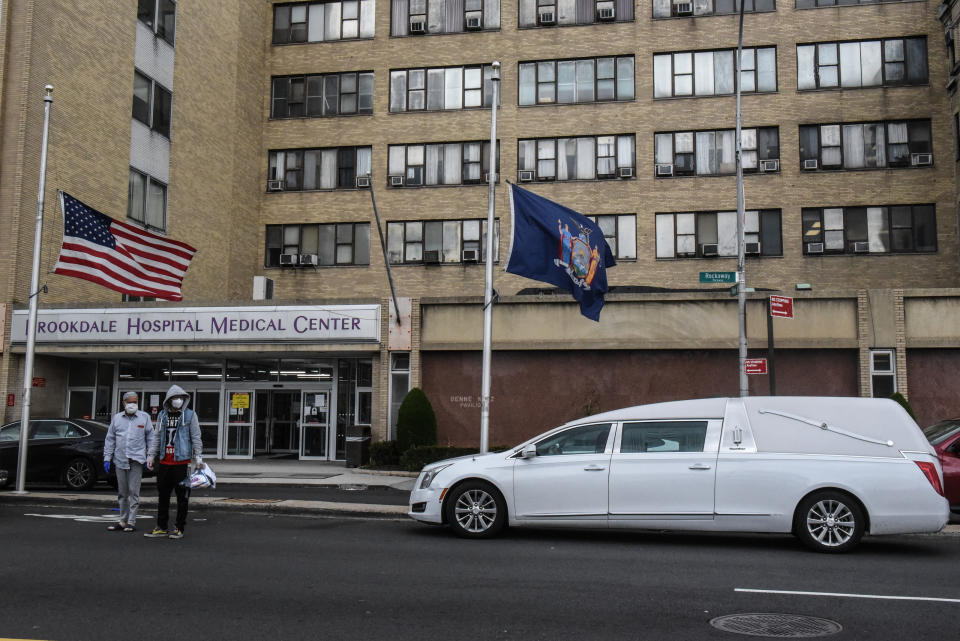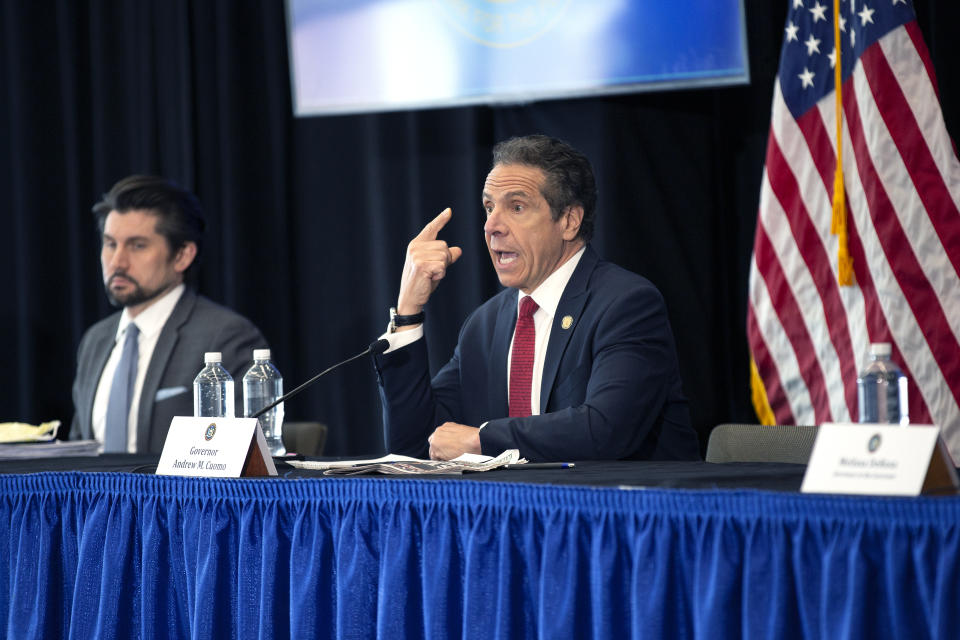'Am I next?': New York ER doctor shares how she lives with the anxiety of the coronavirus pandemic
At 7 p.m. in communities all over New York City, residents clank pots, pans and other kitchen utensils together to acknowledge and thank health care workers and other essential workers fighting to keep the five boroughs and surrounding areas safe during the coronavirus pandemic. The collective show of support brings levity and a sense of camaraderie to a devastated city for a few minutes every day.
The reality is, coronavirus has brought the “city that never sleeps” to a standstill. As of Tuesday afternoon New York City had more than 157,000 confirmed COVID-19 cases and just over 11,800 confirmed deaths, according to NYC Health. While those numbers are daunting, they’re just one part of the story.
By the time the sound of the clanking pots and pans is heard in the Brownsville section of Brooklyn, emergency room physician Dr. Arabia Mollette is usually winding down another long workday at Brookdale Hospital Medical Center. She often doesn’t get to hear the appreciative cacophony. Day in and day out, Mollette, who was born and raised in the Bronx, cares for New Yorkers from some of the city’s hardest-hit communities who are battling COVID-19, including East New York, Canarsie and her own Brownsville neighborhood.
“I lost a neighbor. I lost several coworkers. I almost lost my cousin to this disease,” Mollette, 40, said in an interview with Yahoo News. “So on a personal and professional level it’s been very difficult. I know that has a lot to do with why my anxiety has been provoked, because every day I think to myself, well, am I next?”
For nearly two months, each day has started off in much the same way for Mollette. She wakes at 5 a.m., showers, eats breakfast and says a daily morning prayer to help calm her anxiety before setting off in an Uber for the hospital, where her shift begins at 7 a.m. Mollette and her team treat COVID-19 patients throughout the day and unfortunately see many deaths.
“We cry, we get frustrated, we take five-minute breaks,” Mollette said. “We talk about what happened as much as possible because it’s traumatizing for many of us.”
Normal shifts last about 12 hours, but since the pandemic began, Mollette says, she’s been leaving work even later than usual. In an Uber on her 40-minute trip back home, she listens to music on her phone in an attempt to clear her mind and “not bring work home” to her fiancé. When she arrives at her apartment, she showers, eats dinner, watches some TV and, if lucky, falls asleep by 11 p.m. Sleeping through the night has become a challenge for Mollette. Since the pandemic began, she’s suffered from insomnia, a side effect common among ER doctors.

While hospitals across the country have begun seeing improvements in the number of new admissions of patients with COVID-19, Mollette believes “we are still not in the clear.”
“Even as the curve flattens, the rates of confirmed cases of the coronavirus can still increase until there is a safe vaccine to administer and/or treatment found,” she said.
She remains adamant that people in her community should continue to take the threat from COVID-19 seriously.
“We will survive if we can come together as a community and put public health first,” Mollette wrote in a recent op-ed in the New York Daily News. “Stay home unless you are an essential worker, or need to see a doctor or pick up groceries or medicine. It can save your life, and help protect mine.”
New York Gov. Andrew Cuomo on Sunday said that after May 15, when his order shutting down the state is set to expire, businesses in what he called low-risk industries like construction and manufacturing might begin to reopen in parts of the state that have been less affected by the pandemic.

From a health care perspective, Mollette feels New York City has a long way to go. “One thing that we have a problem with … we’re very impatient,” she said. “We put dates on things. Lifting or reopening the economy should not be based on dates. It should be based on data that’s first and foremost public health over profits. We cannot run a country or reopen an economy if everyone is becoming sick and dying from this disease.”
Mollette also believes that as stressful as this period has been for her city, it has also afforded its residents an opportunity to think about what is truly important.
“This is a time for many of us to really sit down and reflect on what’s happening around us,” she said. “I do see some of the beauty in all of this. … Figure out what [you’re] going to do after this epidemic.”
_____
Click here for the latest coronavirus news and updates. According to experts, people over 60 and those who are immunocompromised continue to be the most at risk. If you have questions, please refer to the CDC’s and WHO’s resource guides.
Read more from Yahoo News:
Public health expert calls for 'no-cost' coronavirus testing and treatment to end racial disparities
How do you celebrate Easter during the coronavirus pandemic? For many, it depends on their pastor
Liberty University students split over decision to reopen school
Telehealth apps for coronavirus approved for Medicare. Here's how they work.





